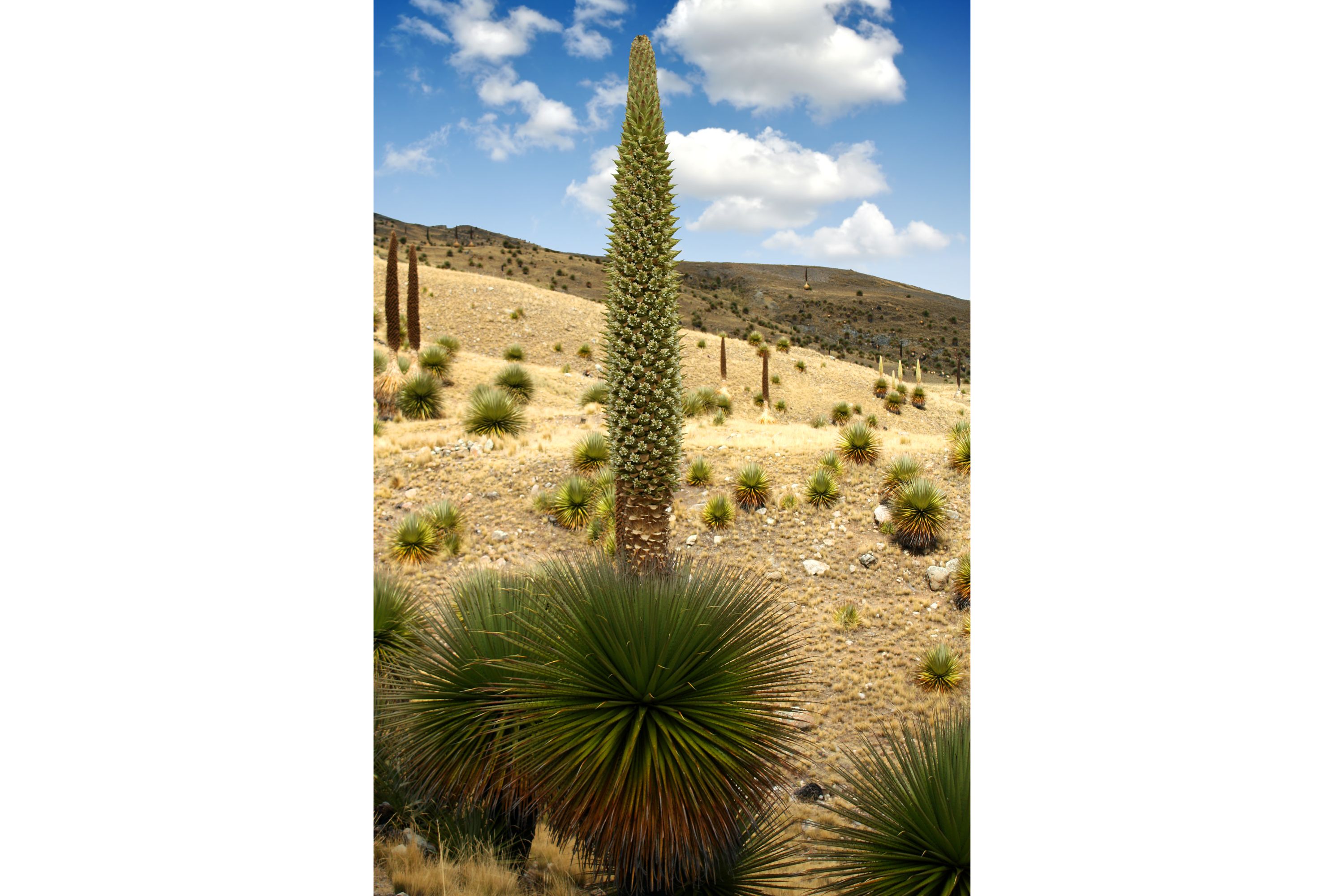Queen of the Andes
(Puya raimondii)

Description
Puya raimondii, also known as queen of the Andes (English), titanka (Quechua) or puya de Raimondi (Spanish), is the largest species of bromeliad, its inflorescences reaching up to 15 m (50 ft) in height. It is native to the high Andes of Bolivia and Peru. It was once hypothesized to be a Protocarnivorous plant. The queen of the Andes is the largest species of bromeliad. Its trunk can be 5 m (16 ft) tall, with a rosette of about two hundred linear leaves, these up to 1.25 m (4 ft) long and about 8 cm (3 in) in width, the leaf spines reaching 1 cm (3⁄8 in) long. The inflorescence can measure between 4–8 m (13–26 ft) tall. The whole plant may reach as much as 15 m (50 ft) tall. A single plant can produce between 8,000 and 20,000 flowers in a 3-month period. Its reproductive cycle (and life) lasts approximately 80 years, though one individual planted near sea level at the University of California Botanical Garden, bloomed in August 1986 after only 28 years. It is semelparous, dying after first reproduction. The plant has been identified to form a close relationship with pollinating birds, and was even hypothesized to be a protocarnivorous plant due to its abilities to ensnare birds in the spiny fronds. However, the adaptations seen in Puya that lead to ensnarement of birds seems most likely to be instead a defense mechanism. P. raimondii is native to the Andes of Bolivia and Peru, between 3,000–4,800 m (9,800–15,700 ft) of elevation on shrubby and rocky slopes. This species seem to be very specialist on site conditions as it prefers to grow in small areas even if the surrounding terrain may seem equally suitable, resulting in a patchy distribution of P. raimondii stands. Moreover, in spite of being a high altitude plant, it has thrived at near sea level in temperate climate. The first scientific description of this species was made in 1830 by the French scientist Alcide d'Orbigny after he encountered it in the region of Vacas, Cochabamba, in Bolivia at an altitude of 3,960 m (12,990 ft). However, as the plants he saw were immature and not yet flowering, he could not classify them taxonomically. The species name of raimondii commemorates the 19th-century Italian scientist Antonio Raimondi, who immigrated to Peru and made extensive botanical expeditions there.
Taxonomic tree:







